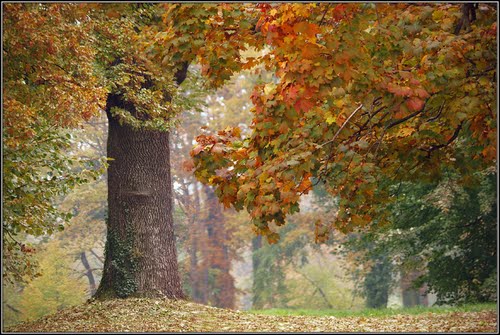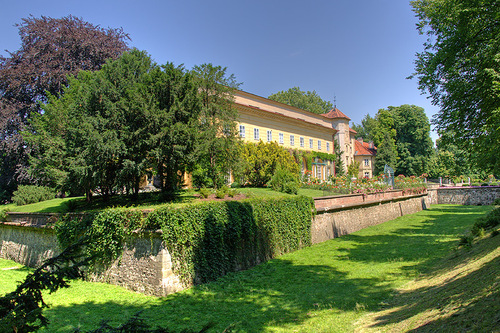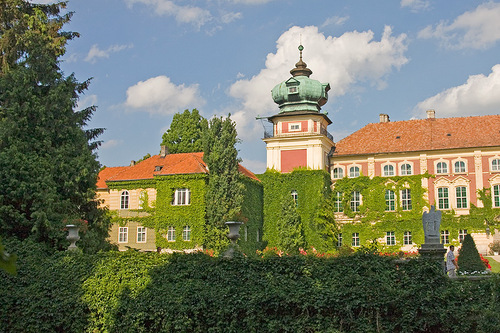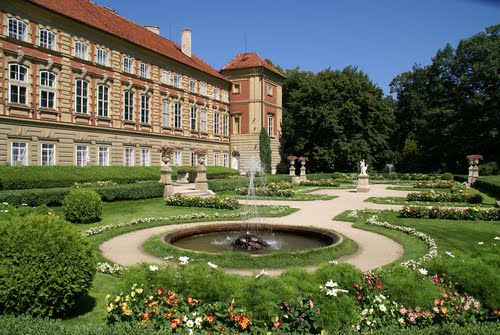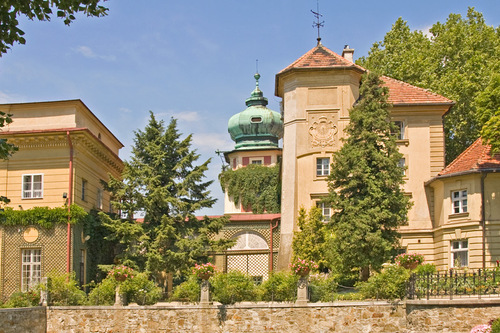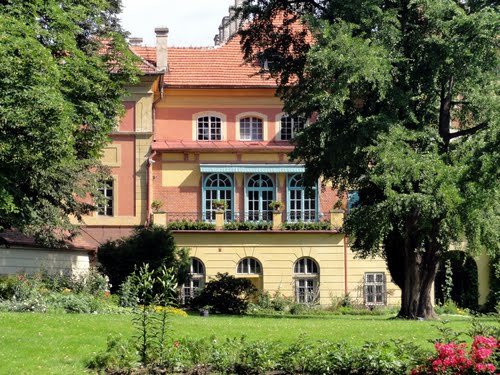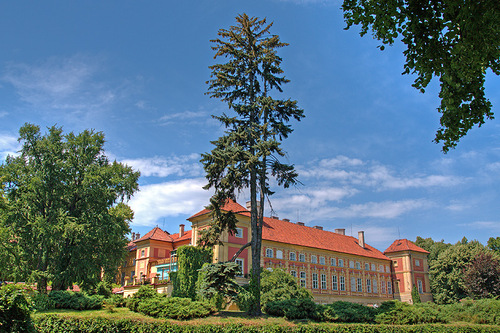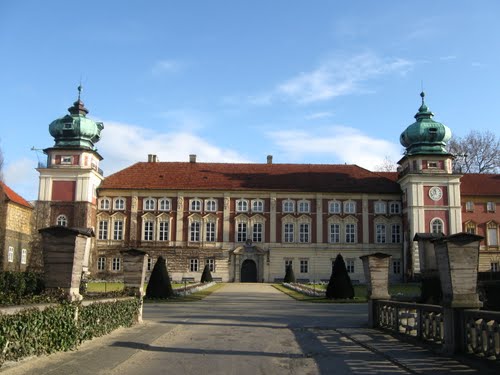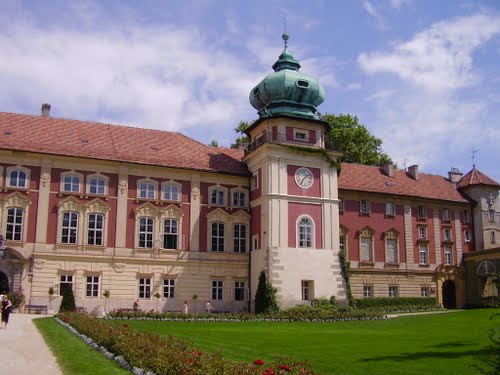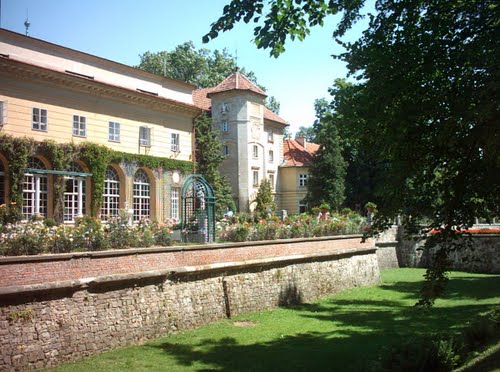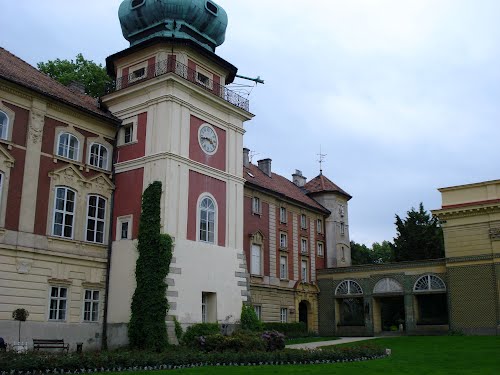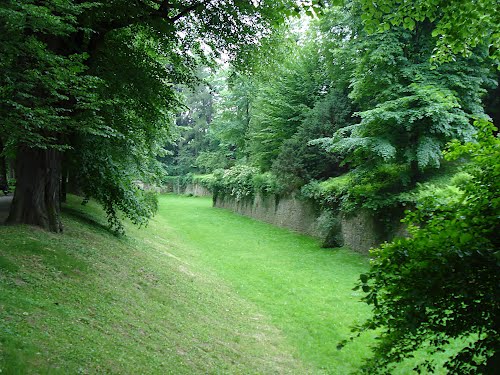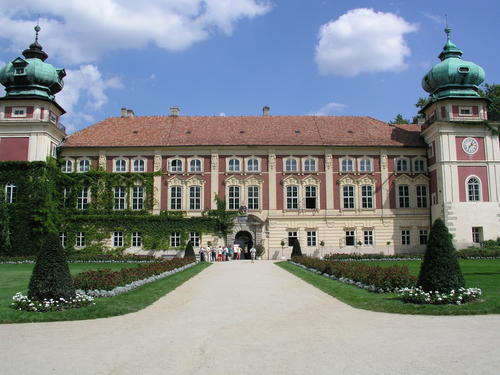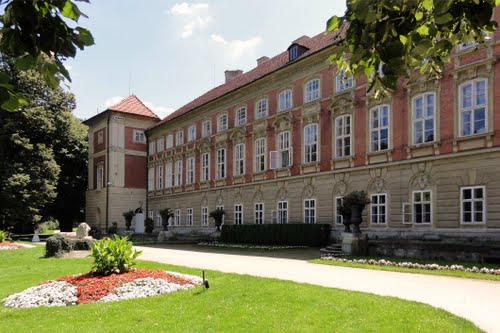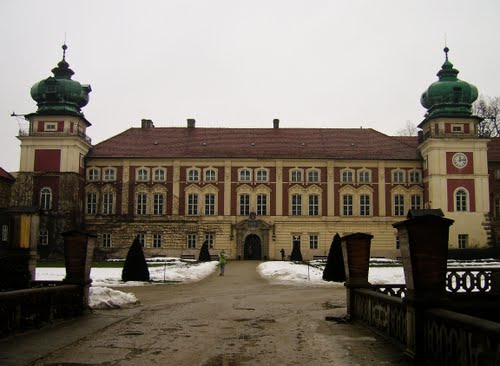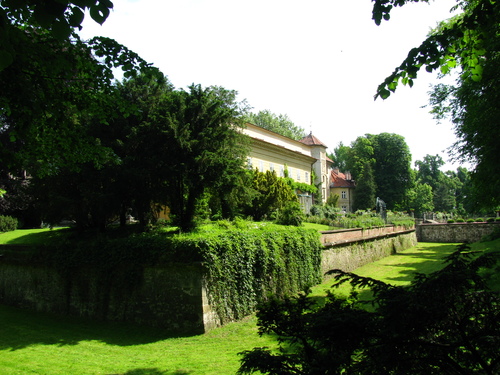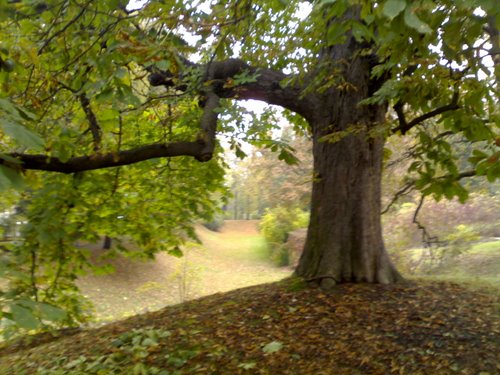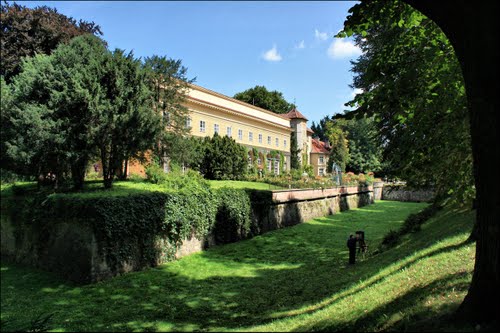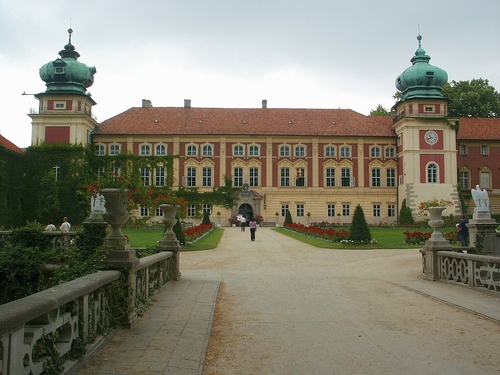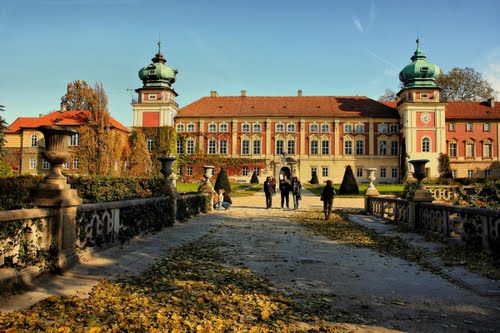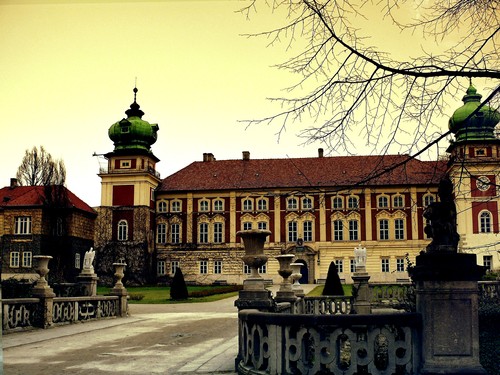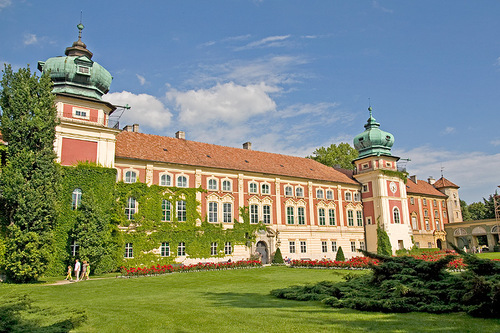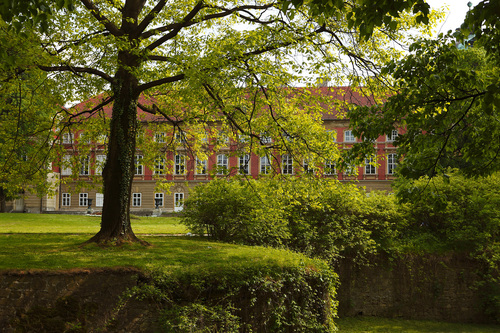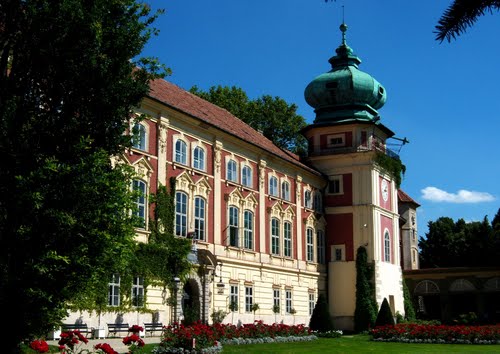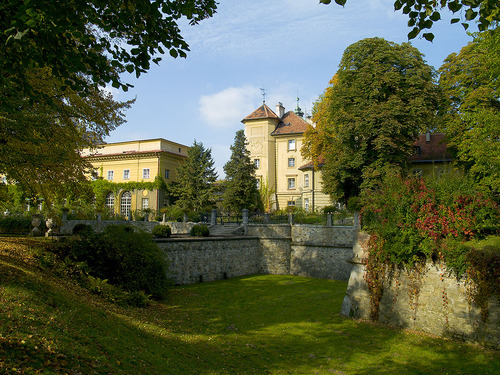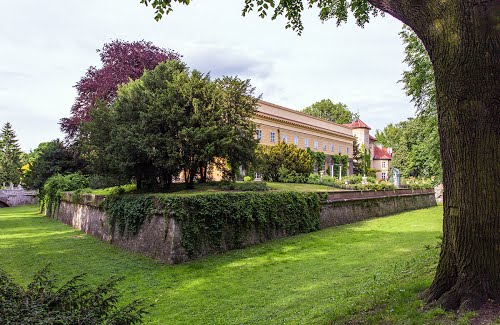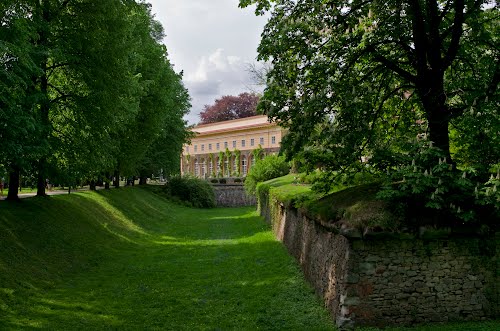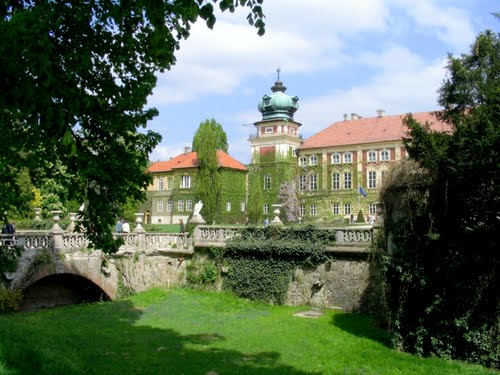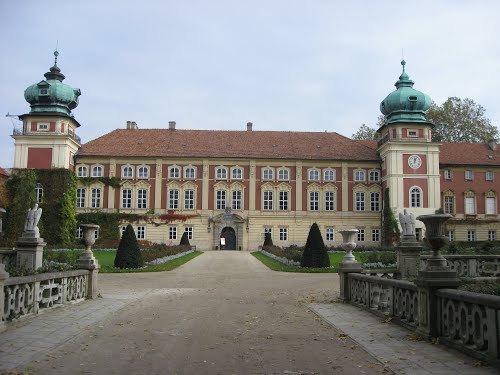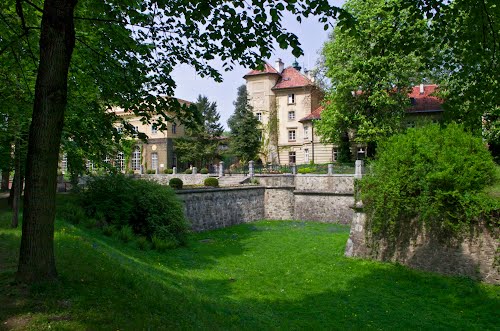Lancut Castle is a complex of buildings located in Lancut, Poland. Historically, the residence of the Lubomirski and Potocki families, the complex includes a number of buildings and is surrounded by a park.
The castle is one of Poland's official national Historic Monuments, as designated September 1, 2005, and tracked by the National Heritage Board of Poland.
History
Lancut castle, whose original structure was erected in the second half of the 16th century, bears traces of consecutive alterations and modernisations performed in the course of 300 years. Over this period it was a home to two great Polish families – first, until 1816, the Lubomirski family, and later – until 1944 – the Potocki family.
The history of Lancut is much older than the castle erected in 1642. It goes back to the times of King Casimir the Great (1333-1370), who founded here a town in accordance with the Magdeburg Rights. At the time Lancut was owned by the Pilecki family, who had connections with the Jagiellon Dynasty. That happened with when Otton Pilecki’s wife, Jadwiga, became the Godmother to the future king, Władysław Jagiello (1352-1434). Later the connections were strengthened with their daughter Elzbieta's marriage to the king. Wladyslaw Jagiello is believed to have visited Lancut twice. Much later, in the period between first and second world Wars, people still pointed to a lime tree growing to the “rectory hill”, a former site of the Pilecki’s wooden fortified mansion, where the king was believed to have relaxed with the third wife Elżbieta. After the Pilecki family, Lancut became the property of the Stadnicki family. The most famous of them was Stanislaw, the Starost of Segewold. Stadnicki extended the castle in 1610 and it took the horseshoe shape.
In 1629, Lancut became the property of Count of Wisnicz Stanisław Lubomirski, Ruthenian Voivode, who in 1647 was granted the title the prince of the Holy Roman Empire. It was he who erected, presumably following Maciej Trapola’s design, the fortified, quadrilateral castle with corner donjons surrounded by bastion fortifications, as can be seen today. Maciej Trapola designed modern building in “palazzo in fortezzo” style. Other traces of those times include parts of the castle fortification, presumably the work of Krzysztof Mieroszewski (1600-1679).
During the Swedish invasion of Poland, in 1656, the castle was visited by King Jan Kazimierz (1609-1672). In 1657, it was unsuccessfully besieged by the Swedish ally, George Rakoczi. In the late 17th century, after the 1688 fire, the castle was restored. It was then that Tylman van Gameren, a Dutch-born Polish architect and engineer who, at the age of 28, settled in Poland and worked for magnates. Tylman left behind a lifelong legacy of buildings that are regarded as gems of Polish Baroque architecture. In Lancut he decorated two towers in the frontage, with the bulbous cupolas so characteristic for the castle’s architecture.
The Baroque palazzo in fortezza in Lancut underwent its first radical alterations in the late 18th, early 19th centuries. Its owners at the time were yet another Duke Stanisław Lubomirski and his wife Izabela nee Czartoryska. Initially transformations were conducted by the Lubomirskis together, later, after her husband’s death in 1783, the Duchess continued the work by herself. The major change involved transforming the fortified castle into the palatial residence.
After the Duchess died (1816), Lancut was inherited by her grandchildren, the Potocki family, and for the next hundred years the castle became the centre of their hereditary family estate, legally established in 1830. The consecutive generations of the Potockis introduced various levels of modernization both in the castle itself and its immediate and more distant surrounding. After Potocki and Duchess grandson and heir, conducted some repairs in the castle, but most importantly erected, outside the moat, a complex of horse-riding facilities consisting of stables, three carriage houses and a manege.
The most radical changes in the estate and the whole surrounding, were introduced in the times of the Duchess’ great-great-grandson – Roman Potocki, married Elżbieta nee Radziwill, that is the late 19th and early 20th century. They carried out a major overhaul and rearrangement of the large Lancut estate, at the same time providing the 17th-century structure with electricity, water pipes, sewers, and central airflow heating. The castle also received a telephone connection with the hunter palace in Julin, erected in 1880 several kilometres away, by Roman, to the design of Panenko.
Roman and Elzbieta Potocki hired a French architect, Amand Louis Bauque, and a graphic designer cooperating with him, Albert Pio, who worked on new stylistic transformations and arrangement of the residence. The old Neo-Gothic decorations on the castle frontage were replaced by the Neo-Baroque ornamentation. The most radical changes were introduced in the horse-riding complex, dating from first half of the 19th century. Only the Manege was left unchanged. However the classicist stable two carriage houses were demolished and replaced with new, Neo-Baroque stables designed by Bauque. Ten years later, in 1902, the new carriage house with a large harnessing hall was built.

